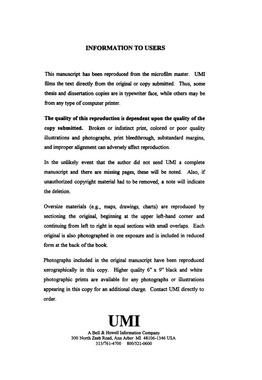| dc.contributor.author | Kelley, Richard Scott. | en_US |
| dc.date.accessioned | 2013-08-16T12:29:39Z | |
| dc.date.available | 2013-08-16T12:29:39Z | |
| dc.date.issued | 1997 | en_US |
| dc.identifier.uri | https://hdl.handle.net/11244/5487 | |
| dc.description.abstract | The first three chapters establish the principles and methods underlying the spatial practice of realism. In Crane's Maggie, A Girl of the Streets, Howells's A Hazard of New Fortunes, and Riis's How the Other Half Lives, social environment is comprehensible only insofar as its ideational substructure (conceived space) corresponds to that which can be visually represented (perceived space). Chapter four reads the "cognitive dissonance" in Hine's Ellis Island photographic portraits as a transition to modernism seen through Hine's practice of drawing the viewer into the traditionally transient social space of southern and eastern European immigrants. Chapter five charts, in Stevens's "Notes Toward a Supreme Fiction" and other poems, the emergence of a modernist poetics of social space. Abstraction and change, as the social conditions of realism, become for Stevens the ineluctable first and second principles of modernism. Abstraction, change, and pleasure thus inform the aesthetic principles of Stevens's modernism as social fields able to re-articulate the discourse and daily life practice of space. | en_US |
| dc.description.abstract | This study establishes a discursive framework for reading a continuity in how realist fiction, social documentary photography, and modernist poetry represent social space. The work of French social theorist Henri Lefebvre, The Production of Space, provides the basis for spatially-informed readings of the fiction of Stephen Crane, the social documentary photography of Jacob Riis and Lewis Hine, and the modernist poetry of Wallace Stevens. Lefebvre's analysis of the spatial subtext of modern urban social reality, in particular its conceptual, perceptual, and communal spheres of influence, helps reveal a pattern that cuts across the realist and modernist text's representations of space: the attempt to create or discover a cohesive spatial environment at a time of great social, cultural, and technological transformation in America. | en_US |
| dc.format.extent | vii, 265 leaves : | en_US |
| dc.subject | Space and time in literature. | en_US |
| dc.subject | Realism in art. | en_US |
| dc.subject | Realism in literature. | en_US |
| dc.subject | American literature History and criticism. | en_US |
| dc.subject | Social problems in art. | en_US |
| dc.subject | Literature, American. | en_US |
| dc.subject | Fine Arts. | en_US |
| dc.subject | American Studies. | en_US |
| dc.subject | Social problems in literature. | en_US |
| dc.subject | Modernism (Literature) | en_US |
| dc.subject | Space and time in art. | en_US |
| dc.subject | Documentary photography United States. | en_US |
| dc.title | The spatial discourse of realism and modernism in American fiction, photography, and poetry. | en_US |
| dc.type | Thesis | en_US |
| dc.thesis.degree | Ph.D. | en_US |
| dc.thesis.degreeDiscipline | Department of English | en_US |
| dc.note | Source: Dissertation Abstracts International, Volume: 58-03, Section: A, page: 0871. | en_US |
| ou.identifier | (UMI)AAI9728707 | en_US |
| ou.group | College of Arts and Sciences::Department of English | |
